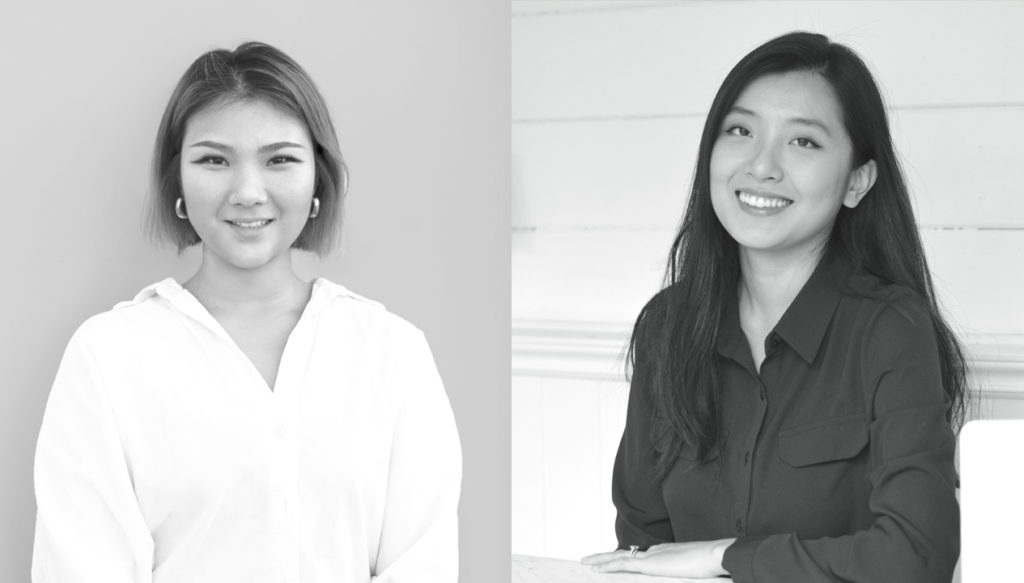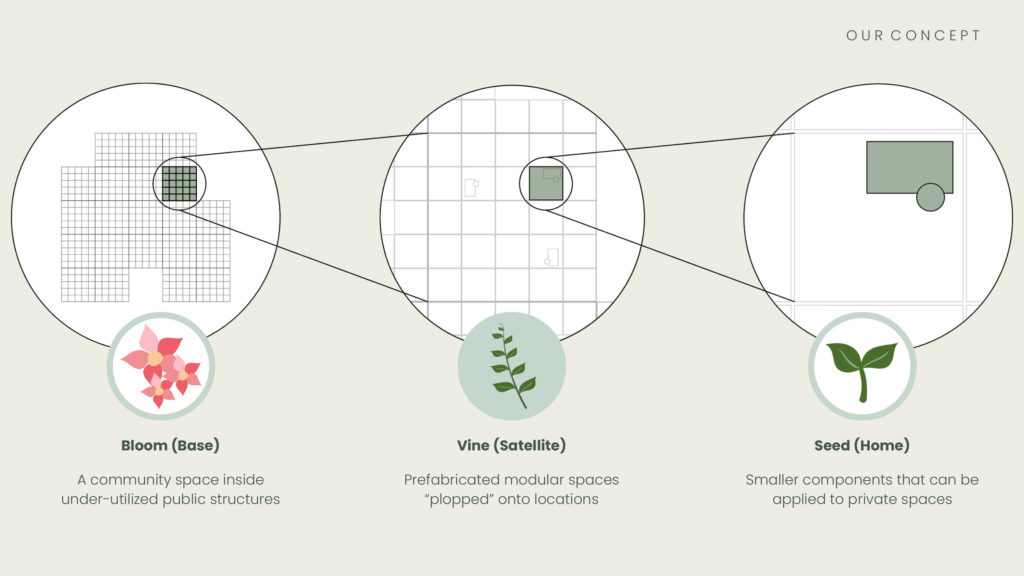CNET interviewed faculty Penny Herscovitch and Interaction Design students Dillon Chi and Susie Moon about the Summer 2020 studio Strong Apart: Resilient and Connected, and “The Care Circle,” one of the final studio outcomes designed by Dillon, Susie and their Environmental Design teammates Hannah Kwon and Judy Lee.
READ CNET ARTICLE HERE
Watch the interview and read below for more information on the studio and project!
In late March 2020, ArtCenter students and faculty were rapidly adjusting to remote learning in the wake of COVID-19 shut downs. Interaction Design students Dillon Chi and Susie Moon decided they wanted to see their courses reflect the new challenges brought on by COVID, and the existing challenges that were now thrust into the spotlight. They put together a list of potential topics for studio courses and sent them to Designmatters.
The Designmatters team shared the list with our colleagues at ArtCenter and partnered with Environmental Design to create a new studio, Strong Apart, focusing on supporting health and well-being for people facing social isolation, whether due to COVID or a myriad of other circumstances. Faculty Penny Herscovitch and Leigh Hoffman were brought on to lead the studio, and Media Design Practices Graduate student Aishwarya Janwadkar was asked to be the TA.
Strong Apart proved to be very popular, with more than 20 students enrolling and a long waitlist. Environmental Design student Judy Lee said she enrolled because “As a spatial designer with a service design background, my design skills and methodologies are anchored in a human-centered approach. I was interested in Strong Apart because of the opportunity to design with collaborators from multiple disciplines on creating a meaningful experience for social change.”
Judy was placed on a team with Dillon, Susie and Environmental Design student Hannah Kwon. This interdisciplinary team of students decided to focus their efforts on older adults. Hannah explained the team chose to focus on this population because, “During this ongoing pandemic, older adults are at increased risk of severe illness from contracting COVID-19. Taking the precautions of limiting social interactions has heightened social isolation for many, especially older adults who may live alone or in residential homes that limit visitors during this time. I felt the need to focus on providing older adults with a community which alleviates burden from their caregivers.”
The team conducted research and co-creation sessions with subject matter experts like Julie Rusk, former Chief of Civic Wellbeing for the City of Santa Monica, Grace Cheng Braun, President and CEO of WISE & Healthy Aging and Dr. Freddi Segal-Gidan, Associate Professor of Clinical Neurology, Keck School of Medicine, USC. Based on their insights and ideation, the team created a concept called The Care Circle.
Hannah and Judy explain, “The Care Circle is rooted in the idea of the continuum of care, to grow with your community through fostering a supportive cross-generational interaction. Our aim is to provide fluidity in the caregiving journey by alleviating burdens, empowering those most in need. With this in mind, it was imperative for our design to operate regardless of a pandemic. We designed a service ecosystem of modular spaces — Bloom, Vine and Seed — plotted strategically to create a community support system. Through this, we explored the possibilities of how spatial interventions can be applied to different environmental and situational constraints. We reimagined how implementing a networked ecosystem can strengthen underlying relationships and help communities build resilience.”
“From a spatial and environmental design perspective, our concept is unique because our research suggested in order to make the most significant impact, we needed our spatial intervention to be accessible and adaptable within existing infrastructures. We adopted the idea of “parasitic architecture” — a transient and flexible modular system designed to meet the unique needs of each community. Our prefabricated structure is practical because at the minimum, it is reconfigurable to accommodate different scenarios. With simple shapes, the structures are designed to connect through various configurations and layouts. To foster emotional connections and offer familiarity, we made sure the modules are implementable for both private and public spaces.”
The studio was a unique but valuable learning experience for the students, faculty and partners. Judy noted, “This studio reinforced the importance of not losing sight of the bigger picture when designing across multiple disciplines. I learned that by tackling a challenge holistically, we can design empathetically for our target users. By placing their needs in the center of our design process, we develop a long term and sustainable design solution.”
The current Fall Strong Apart 2.0: Humane + Connected Aging studio, is in part based on the research and insights on the impact of social isolation on older adults by The Care Circle team. Case studies for both studios, including all outcomes, will be posted on the Designmatters website in January!



